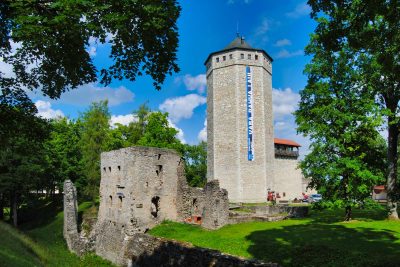Tartu can be mentioned in the same breath as well-known student cities in the West. In terms of flair, the city hardly differs from Oxford, Heidelberg or Uppsala. With just under 100,000 inhabitants, Tartu is quite small, but it is Estonia’s second-largest city after Tallinn and, in a sense, the cultural cradle of the country. And yet, a lively alternative culture has established itself here. Today we would like to introduce Tartu to you in more detail and show you the best things to do in Tartu. And if you click here, you can go directly to our article with the most beautiful places in the south of Estonia.
Tartu – The oldest city in the Baltics
Dorpat, Tarbatu, Dorpt, Derpt, Dörpt, Jurjew – Tartu has experienced more renaming and destruction in the course of its history than any other city in the country. Reason enough to take a closer look at the eventful history of the university city before we come to the most important sights of Tartu.
It is not entirely clear when the region around the city of Tartu was first settled. Archaeological traces of the so-called Kunda culture date back up to 10,000 years. Little is known about that time. However, it is certain that a fortress stood at the foot of today’s Cathedral Hill as early as the 5th century AD. In the 11th century the fortress and the settlement surrounding it were conquered by Yaroslav the Wise, the Kiev Grand Duke.

Plaything of the powers
In the Middle Ages, Tartu was then conquered several times by conflicting powers. After the reconquest of Tartu by Estonians, Tartu changed hands several times before the Teutonic Order (read more about the Teutonic Order here) took over the scepter and transferred the city to the bishopric of Dorpat. At that time, Tartu was also granted city rights on the Riga model and trade flourished, also because the city is conveniently located on the navigable Emajõgi River. The admission to the Hanseatic League was a logical consequence.
Poles, Swedes and Russians
At the beginning of the Livonian War, which had devastating consequences for the entire region, Tartu was then conquered by Russia in 1558, which, however, had to cede the region to Poland already in 1582. Poland then lost control of the city to Sweden in the Polish-Swedish War at the beginning of the 17th century.
Blossom under Swedish rule
For Tartu, this proved to be a lucky chance: in 1632, just seven years after Sweden took over, the first university in what is now Estonia was founded here. At that time, it still functioned under the name Academia Gustaviana (named after the Swedish King Gustav II Adolf), before it was briefly relocated to Pärnu in Western Estonia due to the war and eventually closed down completely for the time being.
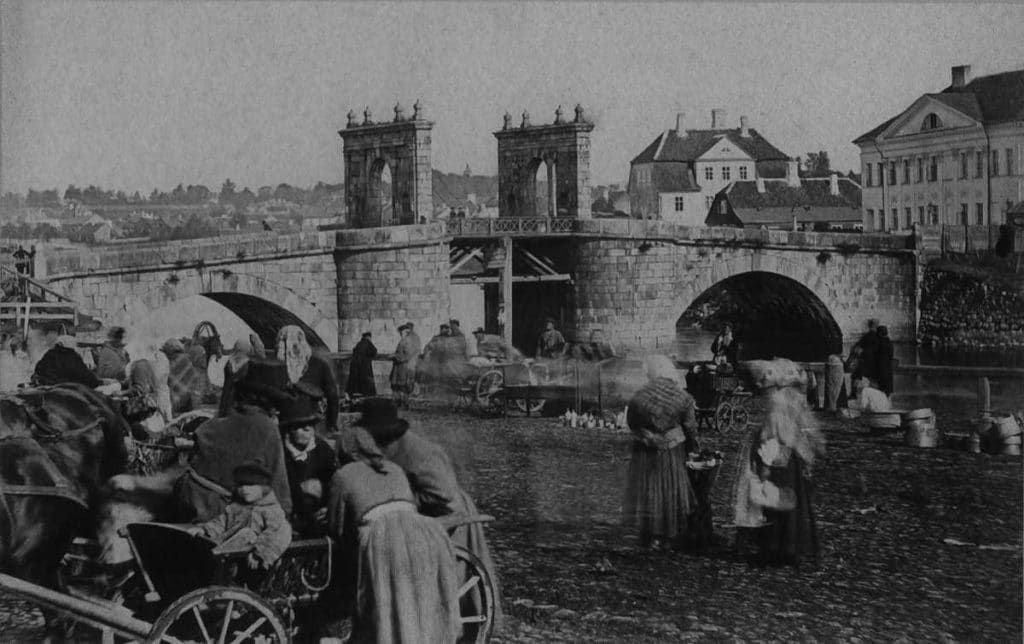
The long Russian rule
Tartu was then heavily destroyed in the Great Northern War at the beginning of the 18th century and fell to Russia, which was able to strengthen its supremacy in the northern Baltic region for centuries to come. The Russians also re-established the university, which quickly became one of the most important intellectual centers of the Tsarist Empire. After the city was captured by German troops during World War I and Estonia enjoyed a brief period of independence between the wars, the Soviet Union captured the city and Tartu was part of the giant empire until its demise.
And so, after a long and eventful history, Tartu has arrived in the modern age and today attracts not only students from all over Europe, but also more and more tourists who enjoy the cozy flair of the city, which was and is for many the secret capital of Estonia.
European Capital of Culture 2024
Due to its significant cultural scene and important institutions such as the university, Tartu has been awarded the title of European Capital of Culture for 2024. The city will surely be bursting at the seams then, so better plan your visit in advance.
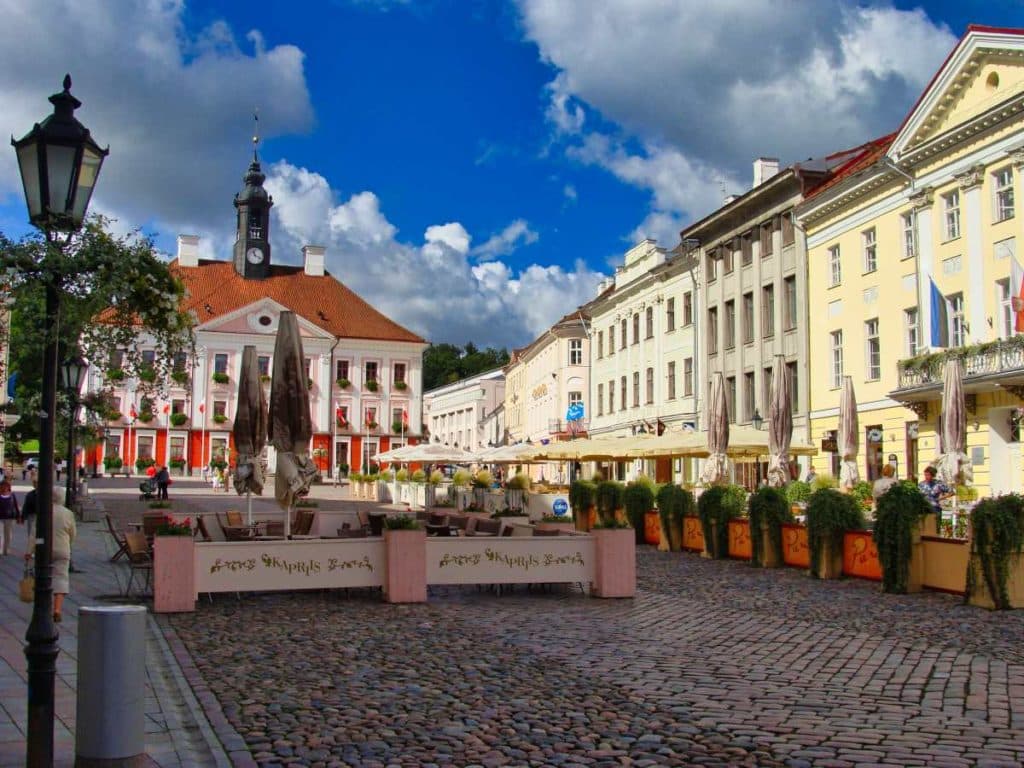
City Hall and City Hall Square
Due to the many destructions, Tartu had to be rebuilt several times and finally received its present neoclassical appearance in the 19th century. Some of the most beautiful buildings of that time stand on the long town hall square. At its western end rises the handsome town hall, designed by the German architect Johann Heinrich Bartholomäus Walther, who came from Rostock. With its pink-red façade, it not only stands out from the other buildings in terms of color, but is also crowned by a baroque hood that makes it a landmark of the city visible from afar.

Leaning House
The Town Hall Square leads in a gentle slope from the foot of the Cathedral Hill down to the bank of the Emajõgi River. Here, there are numerous cafes, restaurants and quaint little shops. A real eye-catcher is the Leaning House (Raekoja Plats 18). It owes its name (and its actual leaning shape) to the not-so-stable peat soil on which the town hall square was built, which caused it to sink further and further to one side over time. This makes it one of the most popular photo motifs in the city to this day.
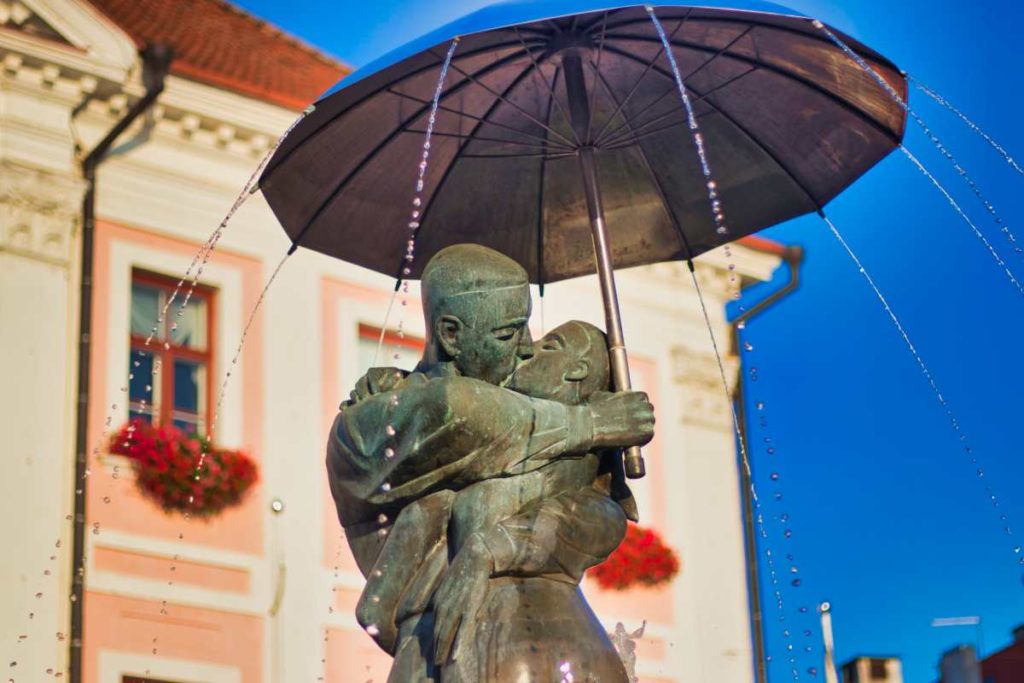
Suudlevad tudengid
Suudlevad tudengid translates as “kissing students” and refers to a fountain. And in fact, this romantic work of art is photographed even slightly more often than the Leaning House. The fountain is not located in front of the university, but in the town hall square. Due to the water jets coming out of the eyelets of the umbrella, the fountain has a certain lightness and cheerfulness. No wonder that not only wedding couples from Tartu have their pictures taken in front of it, but sometimes lovers from other parts of the country come here to take a picture in front of the fountain. Some even go so far as to bathe in the fountain, which we do not recommend here, however.
Mati Karmin
The fountain was created in 1998 by Estonian sculptor Mati Karmin and commemorates the long tradition of the local university. Born in 1959, Karmin himself hails from Tartu and is one of Estonia’s best-known visual artists. After many years in Tallinn, he has since returned to his hometown and teaches here as a professor at the art academy. What many overlook when looking at the kissing couple, by the way: The names of Tartu’s twin cities are inscribed at the bottom of the fountain’s base, which include the German city of Lüneburg and the Scandinavian student metropolis of Uppsala.
Pirogow Park
Directly behind the town hall there is a small terraced park named after the Tartu physician Nikolai Pirogov, one of the pioneers of experimental surgery. A monument from Soviet times at the entrance to the park commemorates the famous scientist. I wonder if that’s why the park is so popular with students? Perhaps. Or maybe it’s because it’s only a stone’s throw from here to the university and because this is the only public park in Estonia where you can officially drink alcohol … Speaking of drinks: Behind the park is the Powder Keg Cellar described below, which according to the Guinness Book of Records is the highest beer cellar in the world (11 meter ceiling height).

University
North of the park there is the University of Tartu. The “UT” is not only the most important educational institution in the Baltic States, but also regularly occupies top positions in international rankings. Especially in biomedicine as well as in environmental and information technology, significant findings have been made here in recent years. The beautiful main building at Ülikooli 18, with its white and gray facade, is adorned by six Tuscan-style columns and a triangular pediment. In its currently visible form, it dates back to 1802, and the Silesian architect Johann Wilhelm Krause was responsible for its construction.
The Craddle of Estonian culture
The university is not only an imposing building, but for the Estonians also of outstanding importance in terms of the development of their culture and language. The first Estonian theater and the first newspapers printed in Estonian were created here (learn more about the Estonian language here). Among the most famous students are Karl Ernst von Baer, the discoverer of the human egg cell, several Estonian heads of state, numerous well-known German Protestant theologians and the Nobel Prize winner in chemistry Wilhelm Ostwald. The fact that so many Germans studied here was also due to the fact that the language of instruction in Tartu was German until 1890. This is also the reason why 2 million (!) books in German are still in the possession of the library today. The university is not only an imposing building, but for the Estonians also of outstanding importance in terms of the development of their culture and language. The first Estonian theater and the first newspapers printed in Estonian were created here (learn more about the Estonian language here). Among the most famous students are Karl Ernst von Baer, the discoverer of the human egg cell, several Estonian heads of state, numerous well-known German Protestant theologians and the Nobel Prize winner in chemistry Wilhelm Ostwald. The fact that so many Germans studied here was also due to the fact that the language of instruction in Tartu was German until 1890. This is also the reason why 2 million (!) books in German are still in the possession of the library today.
Cathedral Hill
After the Town Hall Square, the Cathedral Hill is the second important place in the city where several sights are grouped. It functions as the central recreational place of the city and is made for long walks. Here, just like on the riverbank, there are numerous monuments and sculptures. One of them commemorates the aforementioned Karl Ernst von Baer. But why it is washed with champagne by students once a year, we don’t know either.

Stepping over angels and devils
To get to the Cathedral Hill, you first have to go through heaven and hell, or over the Angel’s or Devil’s Bridge. However, it is actually not named after the PDevil, but after Zoege von Manteufell (Teufel is the German term for Devil), a German-Baltic surgeon, and was inaugurated in 1913 on the occasion of the 300th throne anniversary of the Romanov dynasty. A great spectacle is the singing contest that students hold here once a year: One group lines up on the Angel’s Bridge and one on the Devil’s Bridge. Then they sing as loud as they can – not always pretty, but definitely impressive.
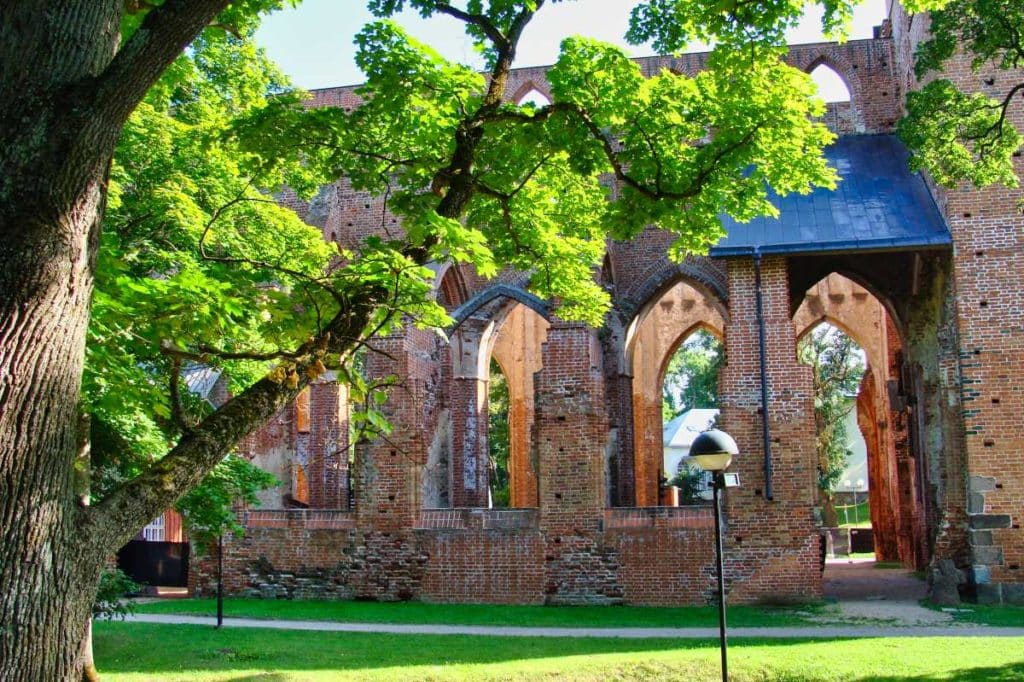

Cathedral Church
Tartu Cathedral is one of the most impressive monuments of the city. It probably dates back to the second half of the 13th century and is so imposing mainly because it stands here today only as a massive ruin. Parts of the cathedral have been renovated and now house the city’s history and university museum. On the two imposing towers are today viewing platforms, from which you have a great view of the city.
Anatomikum
The semicircular anatomical building from 1805 is one of the most impressive architectural monuments of Tartu. Unfortunately, you can’t visit the old lecture hall in the middle of the classicist rotunda at the moment because of restoration work. By the way, in the late 1970s a sensational find was made in the inventory of the Anatomikum, which is said to be the death mask of none other than the German philosopher Immanuel Kant.
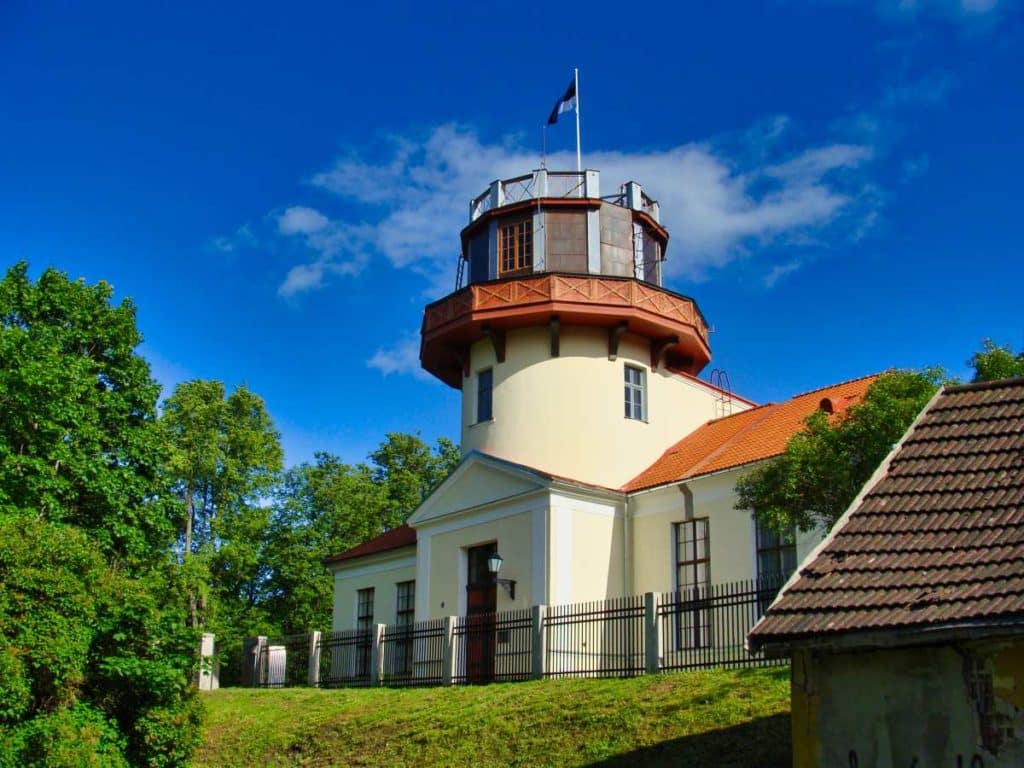
Observatory
And yet another building on the Cathedral Hill can look back on an interesting history, the historic observatory. At the time of its inauguration, it was the largest and most modern in the world. Just like the town hall, it was designed by Johann Wilhelm Krause and served, among others, as a workplace for the Altona-born astronomer Friedrich Georg Wilhelm Struve. He was a pioneer of modern geodesy and also distinguished himself with his work on double stars. He was also responsible for the so-called Struve Arc, an almost 3000 km long chain of measuring points from Norway to the Black Sea, which was the largest earth surveying project in the world at the time and was declared a World Heritage Site by UNESCO in 2005. The observatory in Tartu is the origin of the entire measuring chain.
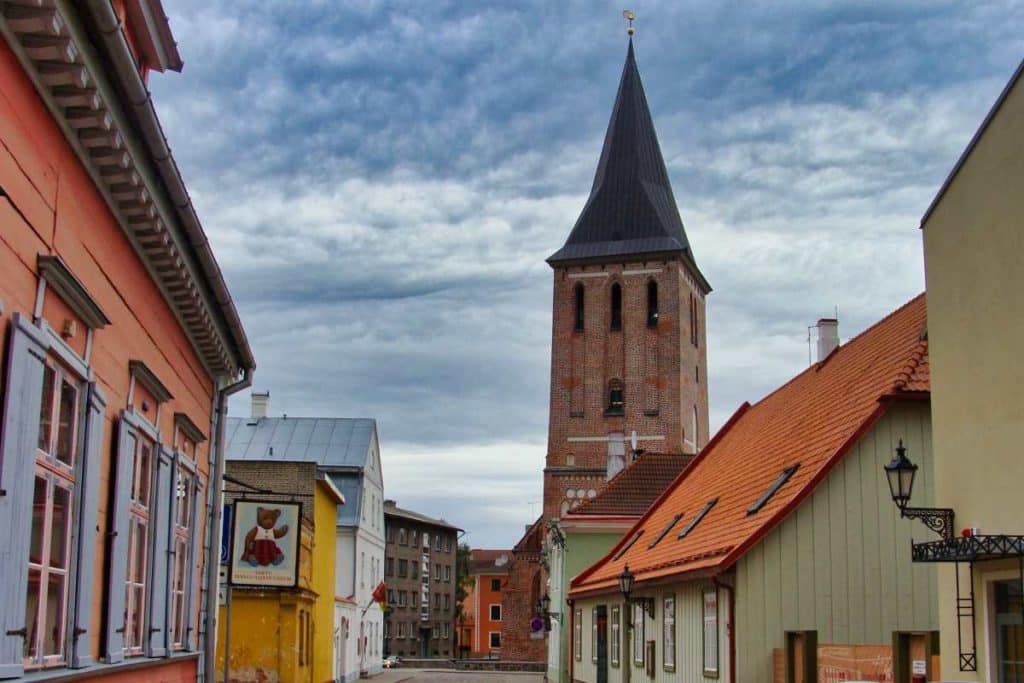
St. John’s Church
Even from a distance, St. John’s Church attracts all eyes. This is mainly due to the massive brick tower that crowns the Gothic church north of the university. It is one of the few stone witnesses of the Hanseatic era in the city and actually dates in its present form only from 2005, because the original building was destroyed by the Red Army in 1944, and the Soviets had no interest in rebuilding this symbol of the Christian faith in the post-war period for ideological reasons. In the church you can admire about 1000 works of art: that is how many terracotta figures decorate the interior and exterior of St. John’s Church. They are unique in the world and were carved from clay blocks in the 14th century.
Antonius Court
Not far from St. John’s Church is the Antonius Court. It is the seat of the Antonius Guild, an artists’ association that works to preserve Estonian art and culture. Divided into three houses, you can buy handicrafts in the beautiful little boutiques and workshops here and get in touch with the artists directly. The houses are grouped around a nice little square, which is often used for theater performances and concerts.

Emajõgi Bank
Emajõgi can be translated as “mother river”. And indeed, the Emajõgi is the most important river in the country. In Tartu County, several smaller streams join to form a river that reaches a considerable width in Tartu and is navigable before it flows into Lake Peipus further north (you can read more about Lake Peipus in this article).
On the picture above we have already shown you the old bridge over the river. Today there is an arch bridge, which is crossed by many daredevils – illegally – balancing on the arch. But there is more to discover here on the shore: Several statues commemorate famous sons and daughters of the city, also remains of the medieval city wall can still be found here.
The shore is very natural and could certainly use some upgrading in the form of a promenade, but also has its charm because of the many boats that are anchored here. From here it is also only a stone’s throw to the Uspenski Church, which was built on the orders of Peter the Great. The Orthodox church is a bit outdated and here and there the plaster is peeling off, but perhaps that is what makes it so charming.
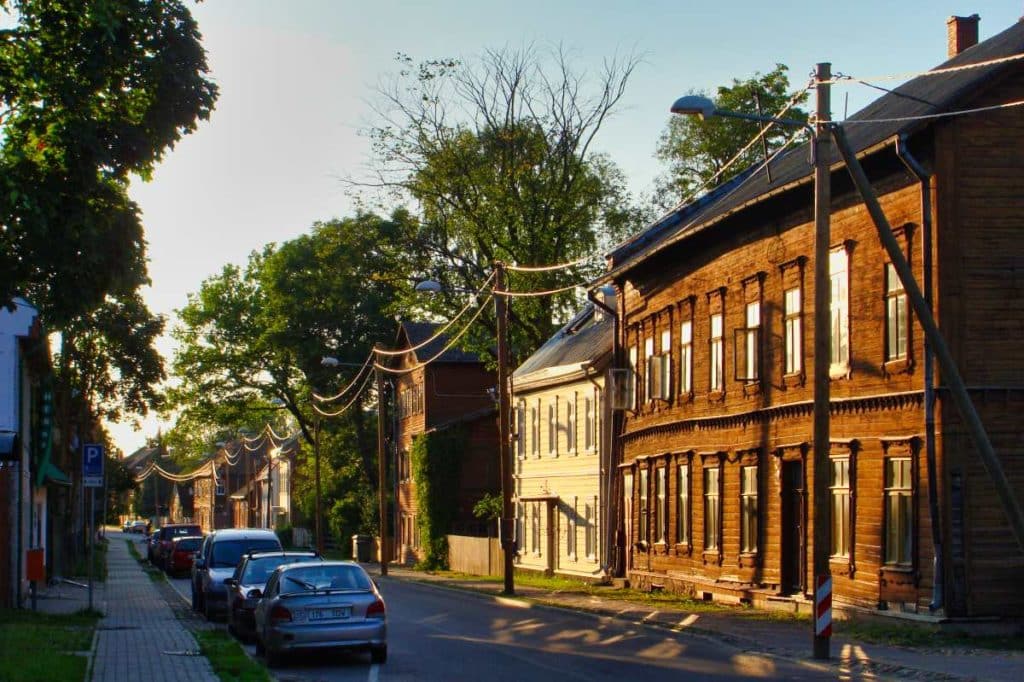
Supilinn
Not far from the center, in the north of the city, lies Supilinn, which bears the beautiful German name “Suppenstadt” (“soup town”). Architecturally, the district provides an interesting counterpoint to the sophisticated center with its magnificent neoclassical buildings. Here, most of the buildings are made of wood and date back to the 18th century. What presents itself so pretty and picturesque today, used to be a kind of slum, because wood as a building material was not exactly a guarantee for a long-lasting dwelling due to the numerous city fires. But it is precisely the pretty wooden houses that make up the charm of this neighborhood. It is also attracting more and more creative people, and the street art boom has now also taken hold here, so that many of the wooden facades are colorfully painted and decorated with works of art.
Karlova
The Karlova district in the south of the city is also creative and young. It is also a popular student district and similarly hip as the Tallinn district Kalamaja. Around the Barlova pub, a creative scene has developed here since the fall of communism, and perhaps nowhere else in Tartu can you feel the student spirit as much as here. But not only for students there is something to discover here, rather Karlova presents itself as a colorful mix of stately town houses, hip little boutiques and quaint cafes.
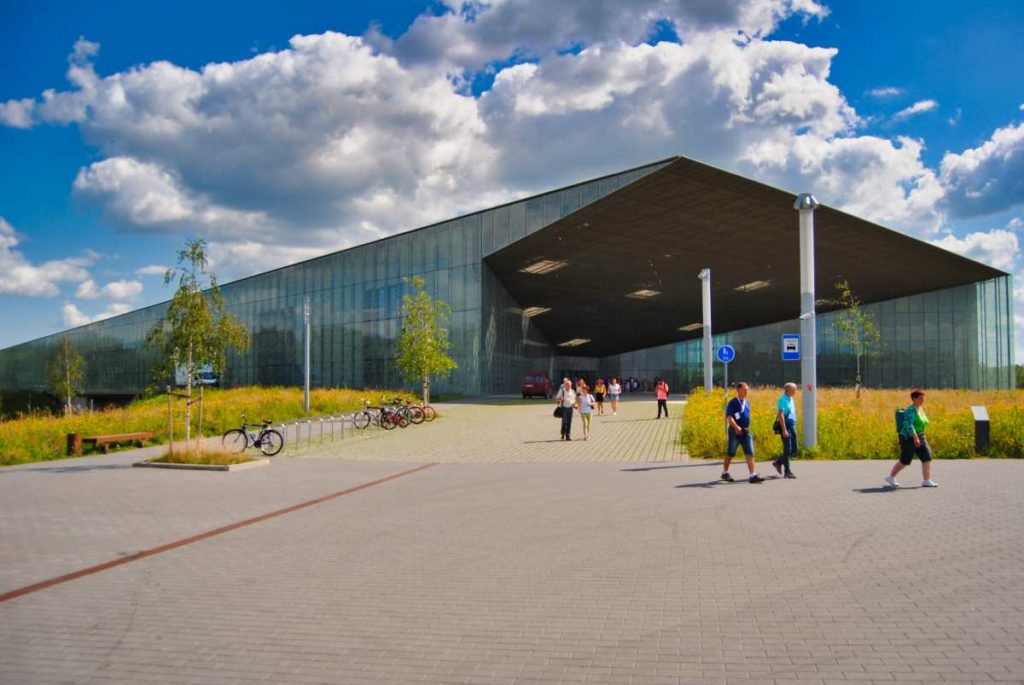
Museums
Estonian National Museum
If you are interested in the history of the country, there is no way around the Estonian National Museum. It is already over 100 years old, but by no means old-fashioned. On the contrary, it provides information about the country’s history in an appealing and modern way. Embedded in a historic manor park, a spectacular building designed by the Parisian architecture firm Dorell Ghomtmeh Tane was opened here in 2016, which today houses, among other things, the most important collection of exhibits on Estonian folk culture in the world.
AHHAA
No, this is not the name of a Norwegian pop group, but the largest science center in the Baltic region. However, the spectacular center is not only used for research. There is also a great exhibition that makes science an experience even for children. Whether in the 4D cinema, the planetarium or the exhibition with optical illusions, you can easily spend half a day here without getting bored.
Eating and Drinking
Do you want to try Estonian cuisine? There are several places in the city where you can do that.
Gunpowder Cellar
In the old gunpowder cellar at Lossi 28 near the Angel Bridge there is a rustic restaurant, the Püssirohukelder. In addition to Estonian cuisine, there is also something for the ears at a late hour and the restaurant turns into a disco.
Café Werner
Since 1895, the café Werner welcomes its guests at Ülikooli 11. Here you can find many delicious cakes, Estonian desserts and good coffee. And all this tastes even better in the chic classicist premises.
Möku
Möku at Magasini 5 is the place to go if you want to try Estonian craft beer. At the hip hangout, you can also enjoy a free concert in the summer outdoors on old wooden crates, if you’re lucky.
Barlova
Barlova is one of the reasons why students gather in the Karlova district in the evenings. Whether you’re stopping by for a beer, a coffee, or just want to hear some live music, there’s always something going on here.
Book recommendations
This tour guide covers Tartu, but also many other beautiful places in the Baltic states and is a great choice when it comes to travel Estonia, Latvia or Lithuania.
No products found.
No products found.
No products found.



